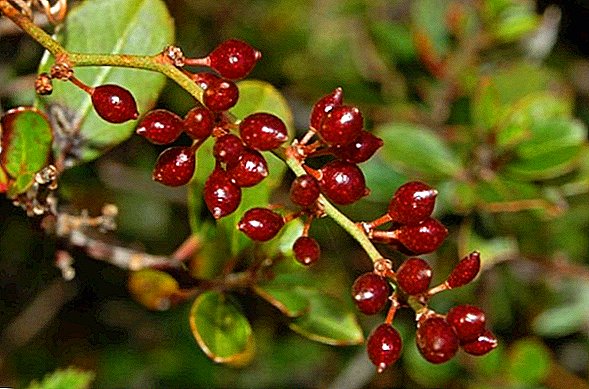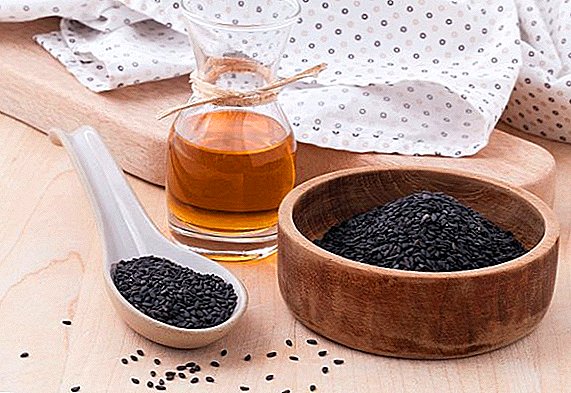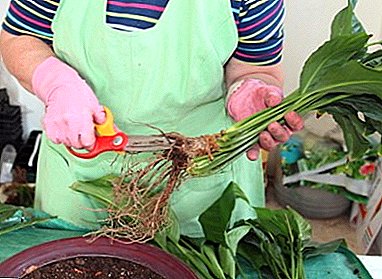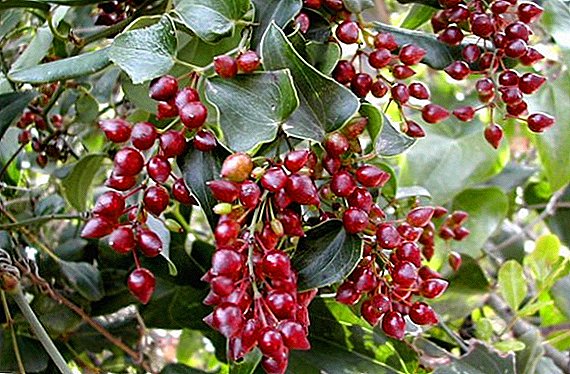 At all times, people resorted to the help of traditional medicine. Today, even official medicine does not deny the ability of many plants and herbs to help cure various diseases. Below we will discuss the rather rare, but useful plant of Sarsaparilla and its beneficial properties for the human body.
At all times, people resorted to the help of traditional medicine. Today, even official medicine does not deny the ability of many plants and herbs to help cure various diseases. Below we will discuss the rather rare, but useful plant of Sarsaparilla and its beneficial properties for the human body.
Sarsaparilla
Sarsaparilla or Smilax is a plant native to tropical countries, with a branched root and a creeping stem covered with spikes. The leaves are green, very large (about 30 cm). It blooms with white flowers, collected in an umbrella. The fruits are dark red, smooth berries.
Did you know? The benefit of sarsaparilla is attributed to the fact that it grows exclusively on soils with a certain composition of mineral substances and semiprecious metals.
Beneficial features
Smilax is widely used in alternative medicine and in the manufacture of homeopathic medicines, since it has a wide range of useful properties:
- anti-inflammatory;
- blood purification;
- diaphoretic;
- diuretic;
- antipruritic;
- tonic

Medicinal properties
Sarsaparel for a long time is applicable to the treatment of various diseases. It is practiced in modern medicine, where based on it prepare drugs involved in complex therapy:
- the most popular use of plants in the process of getting rid of diseases of the reproductive system and the restoration of reproductive function of men;
- during premenstrual syndrome in women, the root of the plant helps to cope with unpleasant symptoms and restore hormonal balance;
Medicinal drugs from juniper, bathing, goldenrod, stonecrop, milkweed, safflower, mordovnik, Chervil are also often used as a diuretic.
- the diuretic effect of Smilax allows it to be used in the prevention and treatment of diseases of the kidneys and bladder, to withdraw uric acid;

- anti-inflammatory properties of the remedy help to alleviate the course of respiratory diseases: bronchitis, pneumonia and others;
- the ability to remove toxins makes smilax root indispensable in the treatment of skin diseases: dermatitis, eczema, psoriasis;
- Sarsaparilla helps regulate metabolism, and, accordingly, can be used in the treatment of diabetes.
Did you know? Before the advent of antibiotics, Smilax was used as an active treatment for syphilis and other sexually transmitted diseases.
Most often, for medicinal purposes, the dried root of the plant is used. To do this, the vine is dug out of the soil, the roots are cut from the main trunk, cut into equal parts (approximately 50 cm long), dried and collected in bundles for further storage. 
Harm and contraindications
Like any medicine, sarsaparilla has contraindications and can cause side effects:
- first of all, the tool is contraindicated for people suffering from acute diseases of the kidneys and urinary tract, because it can cause deterioration;
- gastric ulcer is also a direct contraindication to root intake, as it can provoke inflammation of the mucous membrane of the internal organs;
- It is forbidden to take medicines and products that have Smilax in pregnant women because it has an effect on the hormonal system;
Important! Before applying the perpetual root, it is imperative to consult with your doctor to find the correct dosage and treatment regimen.
- the plant stimulates and tones the central nervous system, therefore it is highly undesirable to use it for people suffering from mental disorders.

Use in cooking
In places where sarsaparilla grows, it is used not only for medicinal purposes, but also in cooking. Most often, this product can be found in the kitchen of the peoples of the Caucasus, because it is there that is the favorite habitat of the vine.
Young shoots of the plant are used as food, both in raw form and as an ingredient in various dishes.
Familiarize yourself with the beneficial properties of medicinal plants such as yarutka, three-leaf watch, walker, onosma, creeping bitter, centaury, astragalus, bonfire, lespedeza, sedge, serpentine head, bookfoot, Caucasian rhododendron, and Zubrovka.
The fresh stem is very crisp and juicy, has a bitter-sour taste. Also shoots canned, fried with scrambled eggs, added to meat sauce and salads. In Georgian cuisine, the leaves of the plant are used to prepare various dishes (mainly salads).
Recipe 1
In order to strengthen the body and increase the tone, you can use tea from sarsaparilla.  To do this, take 2 teaspoons of dried and chopped root, pour them overnight with 1 cup of clean, cold water (the root should be infused for at least 10 hours), then strain through cheesecloth and heat the infusion to 40 degrees.
To do this, take 2 teaspoons of dried and chopped root, pour them overnight with 1 cup of clean, cold water (the root should be infused for at least 10 hours), then strain through cheesecloth and heat the infusion to 40 degrees.
This tea can be used, as well as a means to relieve pain in arthritis and rheumatic pains.
Important! Drinking tea from Smilax root is desirable to limit to 3 cups a day to avoid over-stimulation and irritation of the gastric mucosa.
Recipe 2
In the fight against psoriasis, Smilax root is an indispensable helper. It can be used both separately and in combination with other herbs to achieve the greatest efficiency.  To prepare the collection, take 20 grams of sarsaparella, 10 grams of dried and crushed strawberry and blackberry leaves and 5 grams of buckthorn. The mixture in the amount of 2 teaspoons pour water (250 ml), leave to infuse for 10-12 hours.
To prepare the collection, take 20 grams of sarsaparella, 10 grams of dried and crushed strawberry and blackberry leaves and 5 grams of buckthorn. The mixture in the amount of 2 teaspoons pour water (250 ml), leave to infuse for 10-12 hours.
For the treatment of psoriasis in traditional medicine, they also use decoctions and tinctures of such plants as Makhoniya Padubolistnaya, Syrotika, Syrup, Yucca, Aconite, Celandine, String, Sage Meadow and Stevia.
Ready infusion should be boiled for 15 minutes, then strain through several layers of gauze and consumed hot, dividing the broth by 2 doses per day. The course of treatment should be at least 21 days without a break.
Familiarization with the features and scope of the plant sarsaparilla gives the reader the opportunity to find alternative ways to treat various ailments, as well as strengthen the immune system and cleanse the body. The main thing is to comply with the required dosage and monitor the reactions of your body.













